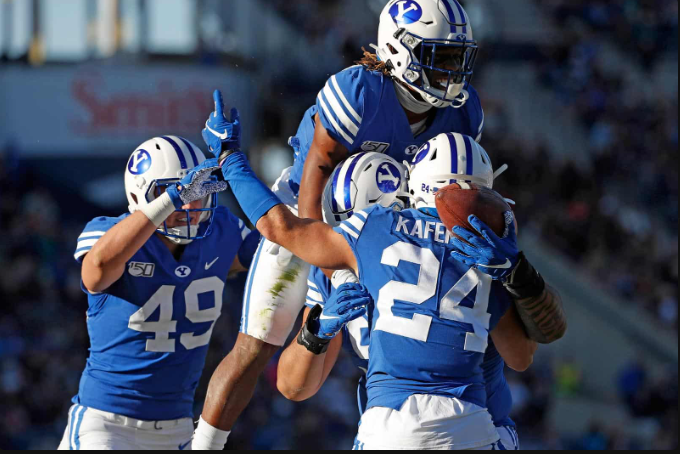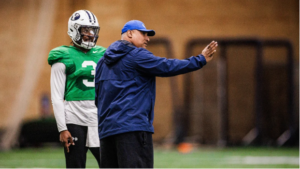

With fall camp just six days away, it’s time for BYU football fans to take a collective deep breath and assess the current state of affairs with a level head. The prevailing sentiment seems to be one of low morale and diminished expectations following BYU’s recent struggles, culminating in a disappointing finish to the 2023 season. As someone who’s seen their fair share of BYU football seasons, it’s hard to recall a time when anticipation was lower among the fanbase. However, amid the prevailing gloom, it’s crucial not to descend into an undue pessimism about the upcoming 2024 season. The challenges facing BYU football are undeniably daunting, but there are reasons to believe that the future might be brighter than it appears.
As I engage with various platforms—social media feeds, message boards, and fan discussions—I’ve identified several prevalent myths among BYU supporters that warrant careful examination. So, let’s delve into these myths and perhaps find some clarity and optimism in the process.
Myth #1: “BYU’s Quarterback room is a disaster”
There’s no denying the uncertainty surrounding BYU’s quarterback situation heading into the new season. Jake Retzlaff, who had his struggles last year, seems poised to improve with a full offseason under his belt alongside coach John Beck. Despite his challenges, the offense did show signs of improvement once he settled in. Moreover, the addition of Gerry Bohanon, a quarterback with Big 12 championship experience from Baylor, adds depth and competition. McCae Hillstead also brings promise after showing well as a freshman at Utah State, while Treyson Bourget arrives with accolades and a strong performance record from his time at WMU. While none of these quarterbacks may be Zach Wilson or Taysom Hill right out of the gate, BYU has a competitive quarterback room that could surprise if supported by a cohesive team effort.
It’s true that BYU hasn’t landed a blue-chip recruit lately, but historical success with quarterbacks like Hill, Wilson, and Jaren Hall—who all started as 3-star prospects—demonstrates that star ratings aren’t everything. With the right support and development, any of these quarterbacks could lead BYU to a successful season.
Myth #2: “BYU hasn’t seen a Big 12 recruiting bump”
There’s a misconception that BYU’s recruitment efforts haven’t received the expected boost since joining the Big 12. Contrary to this belief, BYU’s recruiting metrics have shown significant improvement across the board. The average recruit rating has risen steadily, and the number of competing offers per player has increased dramatically. This indicates not only an uptick in the quality of recruits but also heightened competition for their services. While landing a 4-star quarterback remains a goal, BYU’s overall talent pipeline is stronger than it has been in years past, boding well for future seasons.
Myth #3: “Kalani isn’t the man for the job. He will only go as far as his coordinators will take him.”
Critics argue that Head Coach Kalani Sitake’s tenure has been marked by inconsistency, often citing dependency on coordinators for success. However, this critique applies to many successful coaches in college football. Sitake has overseen notable improvements in the BYU program, including multiple NFL draft picks and top-20 finishes—an achievement not seen since the early years of independence. His willingness to make tough decisions, like parting ways with program legends and close friends, underscores his commitment to progress. While coaching changes can disrupt continuity, Sitake’s leadership and vision for the program remain critical during this transitional phase.
Myth #4: “BYU’s P4 transition is way behind schedule”
The perception that BYU’s transition to a Power 4 conference is lagging stems from narrowly missed opportunities in recent seasons. Close losses to ranked opponents underscored the team’s potential competitiveness at a higher level. Rather than starting from scratch, BYU needs strategic adjustments and time to integrate new recruits and coaching staff members into the program. The trajectory of improvement in recruiting and performance suggests that BYU is closer to meeting the challenges of Power 4 competition than it may seem.
However, while the outlook for BYU football may seem bleak to some, a closer examination reveals a program in transition rather than decline. The quarterback situation, recruiting progress, coaching stability, and competitive performance against top teams all indicate positive trends. As BYU prepares for the upcoming season, fans should approach with cautious optimism, mindful of the progress made and the potential for further growth. The path ahead may be challenging, but with the right mindset and support, BYU football has the foundation to succeed in its new era of competition.

Leave a Reply